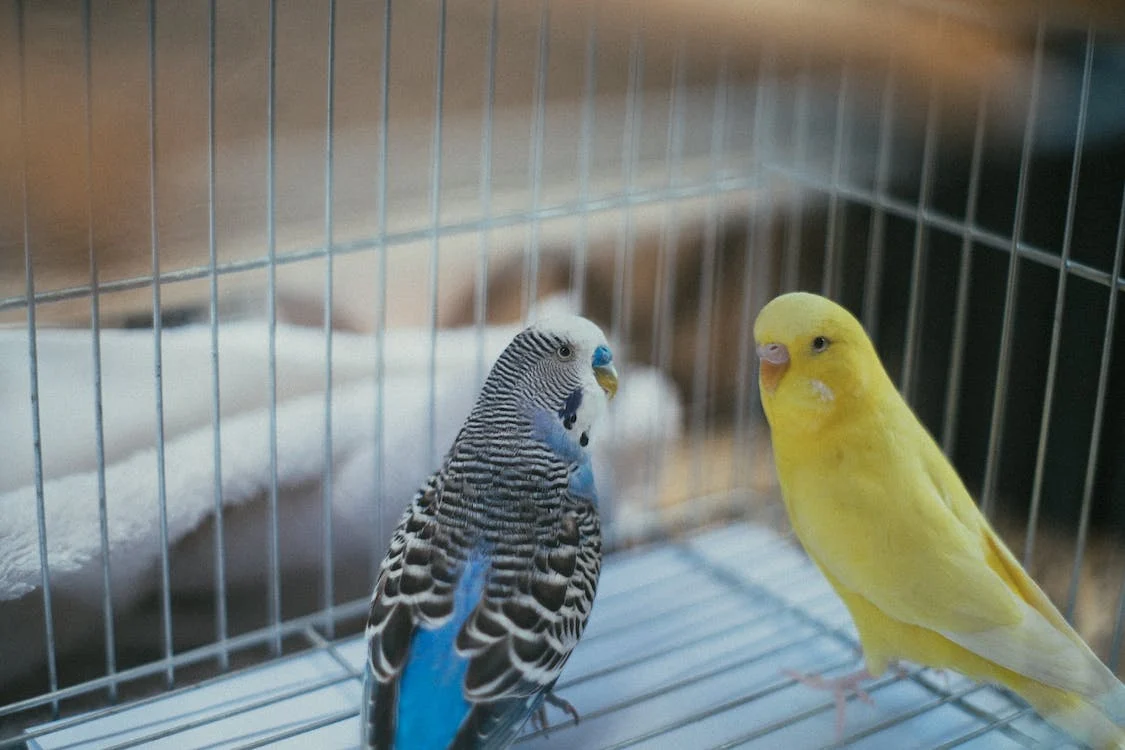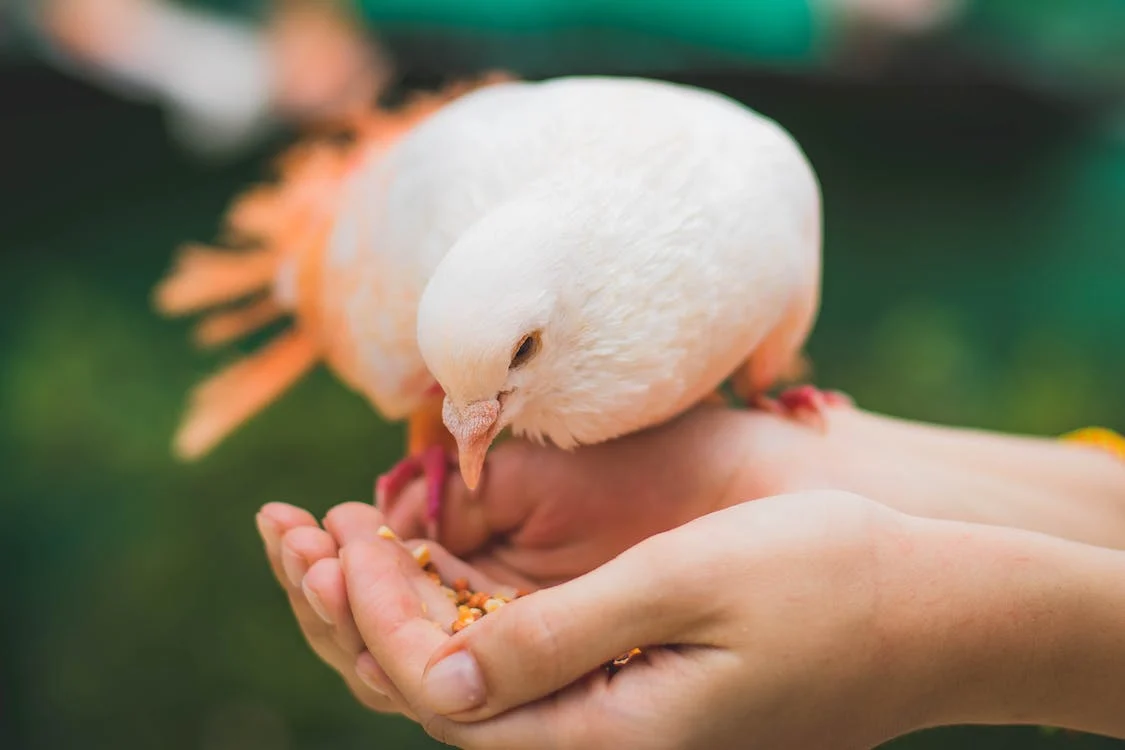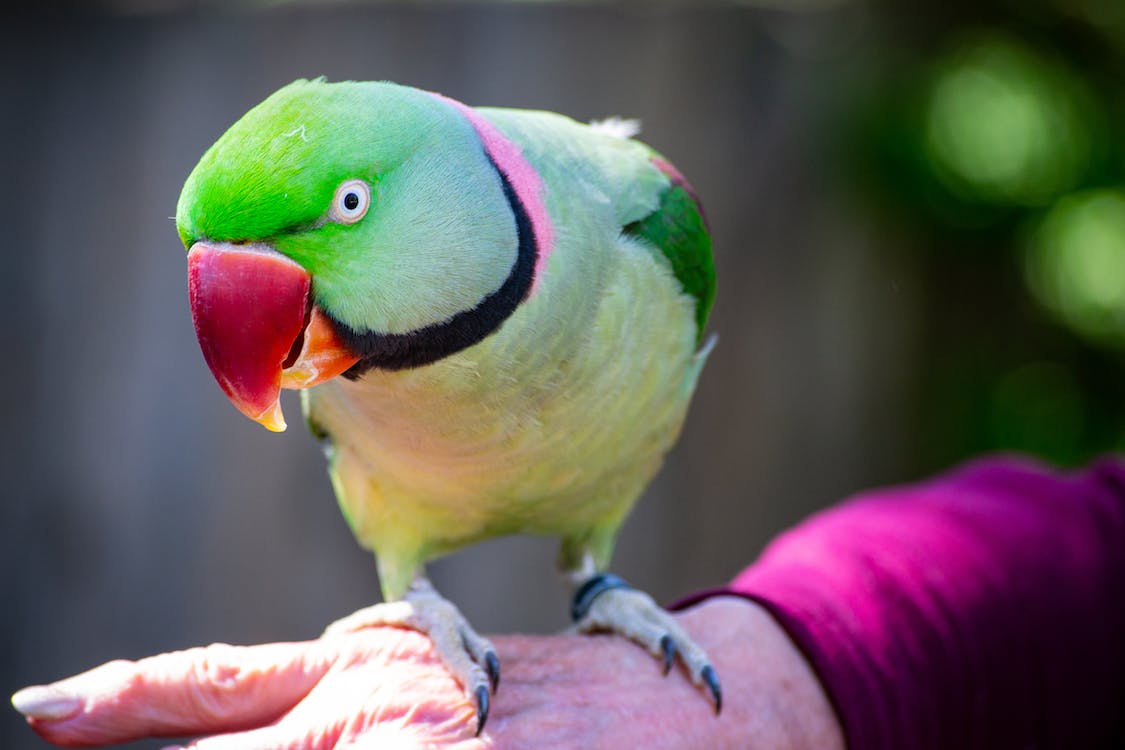Although birds may look extremely different from more conventional pets like dogs and cats, the same fundamental care guidelines apply. The key components are affection, focus, a healthy diet, and skilled medical care. It is true, however, that caring for a pet bird differs significantly from caring for other types of animals and educating yourself on the subject can only help you provide better care for your pet bird.
Anyone who has kept birds as pets would attest to their beautiful nature. With individual personalities and a lifetime of anything from 10 to 80 years, take good care of yourself, and you could just make a lifelong buddy! We have some basic advice that you may use if you are considering obtaining a bird as a pet but want to learn more about how to care for a bird before making a decision.
Choosing the Right Cage
It might be challenging to select the ideal cage for your pet bird, but it is crucial to provide it with the right one. Think about these things when you choose between the various sizes and varieties.
Size and Form of Cages
Surprisingly, the cage’s breadth raises more questions than its height. A minimum of twice as wide a cage as your bird’s wingspan should be used. Even more room should be provided in a cage for many birds.
Material of the Cage and Bar Spacing
Choosing a cage for your bird that is made of the proper material and has bars that will protect them is crucial since the cage is what keeps your bird secure. Additionally, you want to choose a cage that is easy for you to maintain clean. When selecting a cage for your bird, bear in mind these recommendations for material and bar spacing.
A stainless-steel birdcage is inexpensive and long-lasting. To prevent the bird from passing through, make sure the bars are sufficiently spaced apart. Examine the bottom grate carefully; some are simpler to clean than others.
Location of the Cage
Because birds are sociable creatures and like being included in the family, their cage should be close to the action. Because birds have extremely sensitive lungs and can be adversely impacted by smoke and strong scents, avoid placing birdcages in the kitchen or anywhere where smoke may concentrate. Keep birdcages out of the sun and drafts since some birds can’t handle extreme heat or cold.
Setting up the Birdcage
It is time to decorate the cage now that you have picked out the ideal one! Providing their cage with entertaining accessories and toys will keep them occupied and increase their love for their new home.
Dishes and Bowls
Two water bowls—one for drinking and the other for bathing—as well as a feeding dish are necessities for your bird. A birdbath may also be placed right within your bird’s cage. Some bowls include locking mechanisms that prevent spills.
Perch Spots
Birds adore perches. Give them a few options, all of varying heights and made of various materials. Natural wood perches serve as chewing posts as well, so they will require replacement regularly. Concrete is a wonderful option for a lower perch, and braided rope provides for a flexible perch.
Check your bird’s foot to determine the appropriate perch width. When perching, there should be a 34-inch space between the bird’s front and rear nails.
Bedding/Liners
Use a paper liner or recycled paper bedding to line the enclosure floor. At the very least every other day, change the liner.
Cage toys
Birds adore entertaining cage accessories and toys. Among the top options are:
- Rope knots and toy twisters
- Puzzles that include goodies
- Ladders and swings
- Toys that fall apart and are made to be destroyed by birds
- Chew toys that strengthen the beak
Safety should always come first when picking cage accessories; avoid giving birds anything they may accidentally ingest or that could tangle them.
How to feed a bird
Let us begin with a rather simple inquiry regarding bird care: what do birds eat? Your little pets’ diet often consists primarily of bird seed, which is excellent for providing them with a variety of vitamins. Beware of eating dry, packaged seeds, though; they may be lacking in vital nutrients for your bird. Your bird should also be given vegetables, particularly the green type, in addition to seeds. Celery, parsley, and spinach are all suitable choices. To be healthy and robust, birds can also eat fruit, dandelion, and milk thistle.
Types of Food
You may use a variety of bird foods to entice and feed birds in your yard or outdoor area. The kind of birds you wish to attract and the regional bird species in your area will determine the sort of bird food you select. Following are some popular bird food options:
- Birdseed – One of the most well-liked varieties of bird food is birdseed. It is available in a variety of mixes to accommodate diverse bird species. Sunflower seeds, millet, safflower seeds, and cracked maize are common seeds included in birdseed blends.
- Sunflower Seeds – Cardinals, chickadees, finches, and sparrows are just a few of the bird species that enjoy sunflower seeds. Sunflower seeds come in a variety of varieties, including striped and black oil varieties.
- Nyjer (Thistle) Seed – This is also known as nyjer seed, is a tiny, oil-rich seed that draws the attention of finches, sparrows, and other small songbirds.
- Mealworms – Insect-eating birds like bluebirds, robins, and warblers are drawn to mealworms because they are a high-protein dietary source.
- Fruit – Fruits including apples, oranges, and berries are favorites of many birds. You may put out fresh, dried, or even overripe food to attract birds. Some bird lovers even do this.
- Nectar – Hummingbirds and orioles adore nectar, a delicious liquid. These birds can be attracted by nectar-filled specialty feeders.
- Suet – Made from animal fat, suet is a high-energy diet that is particularly beneficial for birds during the colder months. Among the birds that eat suet are woodpeckers, nuthatches, and wrens.
- Cracked corn – Cracked corn is a common ingredient in many birdseed blends, and ground-feeding birds like sparrows, juncos, and doves like it.
- Peanuts – For birds, peanuts are a wonderful source of both protein and fat. Nuthatches, bluejays, and woodpeckers are a few of the birds that like peanuts.
- Insects – Insectivores, a type of bird, favor live insects like mealworms, crickets, and ants. These insects can be provided in customized feeders.
- Grease and Cooking Fat – Cooking fat and oil can be saved and used with birdseed or breadcrumbs to provide a high-energy treat for birds, especially in the winter. The grease should not contain salt or other chemicals.
- Homemade Bird Treats – Using products like peanut butter, birdseed, and dried fruit, you may make your bird snacks. These may be bent into many different shapes and hung from feeders.
It is best to fill bird feeders in the early morning and late afternoon when birds are most busy. Make sure that freshwater is accessible every day. Provide high-energy meals like suet and black oil sunflower seeds during the winter months when natural food sources may be limited. Provide a range of seeds, nuts, and fruits throughout the warmer months. Feeders should be cleaned and refilled regularly to preserve hygiene and stop the spread of illness. You may enjoy a variety of birds all year long while promoting their health by sticking to a regular feeding schedule and keeping clean, well-stocked feeders.
Exercise and Play
Exercise is crucial for the health and well-being of your pet bird, just like it is for people. Here are some suggested activities that you may do with your bird:
- Chase – You may chase your parrot about by putting it on the bed or a blanket on the floor. The majority of birds truly enjoy this activity, but aggressive behavior is not permitted during this period.
- Climbing – If your home has a staircase, let your bird fly up and down it to encourage climbing. If not, tie a rope to the ceiling from the floor and encourage the dog to climb and descend when told to. Additionally, there are several items available online that may be utilized to promote climbing, such as cargo nets and ladders.
- Step-ups – Just encourage your bird to perform several step-up activities (also known as laddering) from one hand to another.
- Ball or fetch – On the floor or a bed, play fetch or throw the ball.
- Dancing – Play your bird’s preferred music and invite them to join you in the dance. The bird will become agitated and start flapping its wings.
- Foraging and enrichment – Fruit and vegetables are the foods most likely to be perceived as rewards, therefore this is a terrific enrichment activity and a way to feed them. The ideal approach to begin training your bird to forage is to put fruits and veggies in foraging toys, wrap vegetables on paper, or place them in bowls while it is watching. Put some fruit and veggies in a shallow bowl, cover it with paper, and you have a cheap and simple way to start foraging. Make a little hole on the top at first, but your bird will soon realize that there is food behind the paper. Food items can also be positioned higher up, making access to them more difficult.
Health and Well-being
For your pet birds’ health and welfare, regular veterinarian treatment is important. To monitor your bird’s health and identify any possible problems early, make an appointment for periodic checkups with a bird veterinarian, ideally at least once a year. Your veterinarian can do a complete checkup, administer immunizations (if required), and provide advice on correct diet and care during these appointments. Additionally, you may talk about any worries or inquiries you may have regarding the health of your bird during these visits.
A bird emergency kit, which can contain supplies like gauze, a tiny carrier, a heating pad, and the phone number of an avian emergency clinic, should always be kept on hand. During crises, quick action and skilled veterinarian treatment can significantly impact your bird’s chances of recovery.
Conclusion
In conclusion, providing for pet birds requires important components. Despite their special requirements, birds may make great, enduring companions if properly cared for. Your bird’s health may be ensured with routine checkups at the vet and an emergency pack. These recommendations can help you create a safe and caring environment for your feathery buddy, developing a strong attachment.



